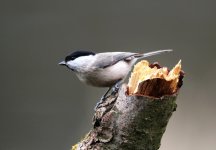TomSmith
Well-known member
but this was not a thorough study and it had not been verified on a large sample so far. Nobody seemed to use it! However, it is being verified this winter in UK (and on skins from other European races) and is working at 98% accuracy (on hundreds of birds). This is for a paper to be submitted later this year. So it seems highly reliable.
Has this paper been published? Was just wondering - dug up this thread while trying to ID a marsh-willow tit seen yesterday.





